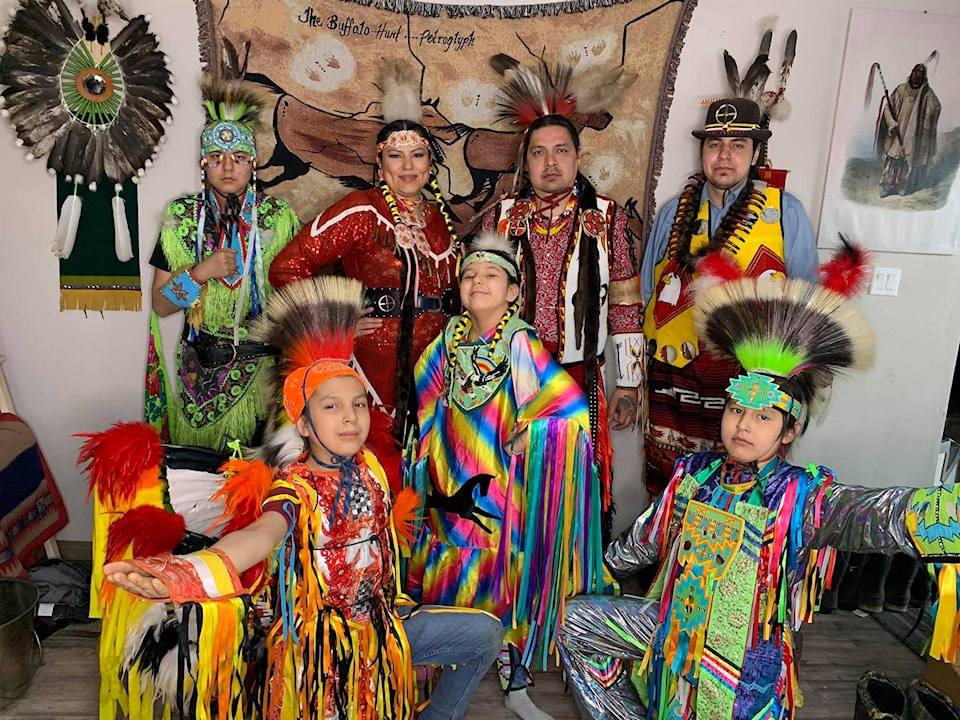With Alberta’s reopening plans this year, powwow season is expected to have one of the largest turn out of spectators and dancers.
“The powwow trail is going from one territory to another Indigenous territory and travelling from another treaty area to the next,” said Karlene Cutknife, a third generation Indigenous dancer.
COVID-19 impacted many within the Indigenous community and exacerbated social conditions. Unfortunately, Cutknife was not able to be creative during the pandemic like many non-Indigenous communities.
“At the start of the pandemic I was dealing with my own mental health issues. People within my family were dealing with addictions. It was not a good time to be creative and beading,” said Cutknife.
She says later on in the pandemic there was virtual powwows that took place and they were helpful in uplifting her soul and her household during this pandemic.
“It really helped in finding that connection again to the powwow community,” said the central Albertan.
She explains that powwow season is a time of the year when Indigenous communities enjoy mother nature on Earth. The season is where Indigenous communities celebrate the summer solstice through dance.
Cutknife says each dancer has their own form of prayer through dance.
“It’s such a blessing and uplifting place to celebrate.”
She says that the powwow consists of drummers, the drum, singers, dancers, elders, dignitaries and spectators.
“Overall, a powwow is where we all come together to socialize and connect through dance.”
She says that she dances for community, family and friends.
“It’s a way of prayer and healing … I dance for those who can’t dance,” she said.
“My fathers’ teaching trickles down to me. With my knowledge of the powwow circle I was able to pass it down to my twin daughters and my oldest daughter who now have that path to dance,” said Cutknife.
“My father Willard Cutknife danced powwow from a very young age. How he learned about the powwow and singing was through his uncle Ben Cutknife. So, I come from a powwow family,” said Cutknife.
“My children dance with so much pride.”
Cutknife says her family is working on completing her partner’s and her daughter’s regalia in preparation for the upcoming powwow season.
Cutkife talks about the term ‘powwow family’ that is commonly used on the powwow trails.
“I have a powwow mom and I have a bunch of powwow sisters, throughout all the years of dancing, since I was 11 years old. I’m now 35. I built this deep friendship within the powwow circle. This friendship is so strong, to a point that I call them my powwow family.
“This past weekend I had this young little girl that I mentored. She still comes up to me and asks if she can call me her powwow mom? I’m like yes! Absolutely,” said Cutknife.
“A powwow family is a relationship that you build over time, where you feel like this is your powwow mom, your powwow dad, and these are your powwow sisters and this your powwow family,” said Cutknife.
Katherine Swampy, a Cree Jingle dress dancer and Samson Cree Nation councillor said she attended a mini powwow in Samson in Maskwacis on Saturday.
“It was a great feeling to be surrounded by people and dancers, listening to the song and drums. It made me very happy,” said Swampy.
She says a powwow is many things and a little hard to describe. The dances are ceremonial and there are pipe ceremonies, feasts, and a lot of prayers involved.
But it’s also a traditional celebration for Indigenous peoples. Most nations host the powwow celebration, which includes dances for all ages, sometimes they are competitive and sometimes they are traditional, categories of dance and age are included.
“People camp out at the powwow site, many teepees surround the arbor, there’s an emcee to tell the people what’s going on and which category is dancing. There’s drums and singing, and sometimes they are competing too. There’s other events like a pageant for youth, princesses and warriors. And sometimes hand games take place,” said Swampy.
She says Canada is undergoing deep reconciliation. The public is encouraged to come out and enjoy the show together.
The Samson Cree Nation powwow will be held Aug. 13 to 15.
List of this year’s post COVID-19 Powwow Trail of 2021:
(Alberta, Saskatchewan, Manitoba, B.C., Canada)
July 2, 3, 4 Alexis Nakota Sioux Nation Pow Wow - Pow wow season begins
July 16, 17, 18 Onion Lake First Nation Pow Wow
July 23-25 Peepeekisis Traditional Pow wow
August 6-8 Little Red River Powwow
August 6, 7, 8 Frog Lake First Nation Pow wow.
August 10 -12 Cowessess Pow wow Aug 10-12
August 13,14,15 Samson Cree Nation Pow Wow
August 14, 15 Sturgeon Alberta Lake Pow wow
August 20-22 Waterhen Traditional pow wow
August 20-22 One arrow Traditional Pow wow
Aug 20-22 Paul Band First Nation Powwow
August 24-26 Kahkewistahaw Pow Wow
August 27-29 Canoe Lake Traditional Pow wow
August 27-29 George Gordon FN Pow wow
August 27 - 29 Thunderchild FN Powwow
Sept 3-5 Kainai Pow wow
Sept 4-5 Flying Dust Pow wow
Sept 17-19 Long Plain First Nation Pow Wow
